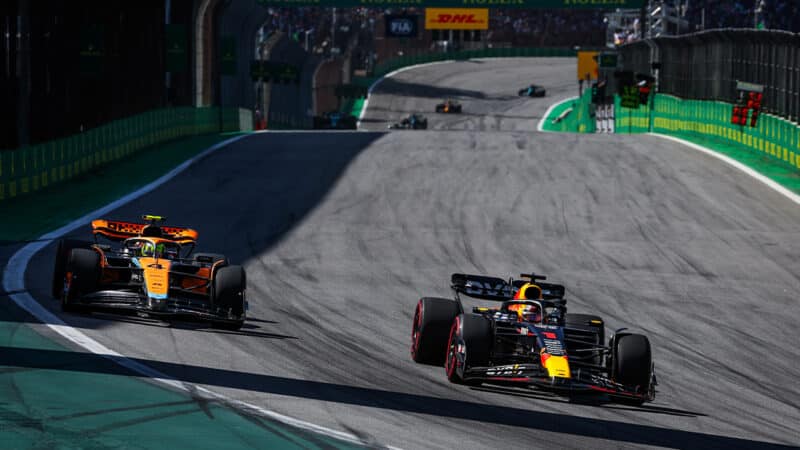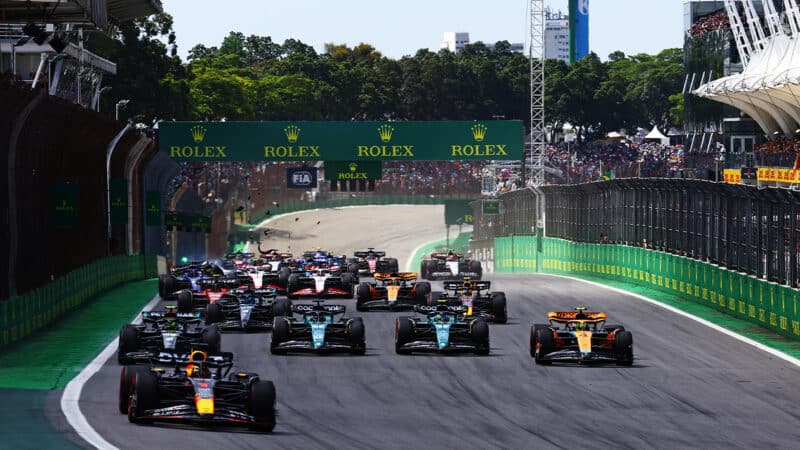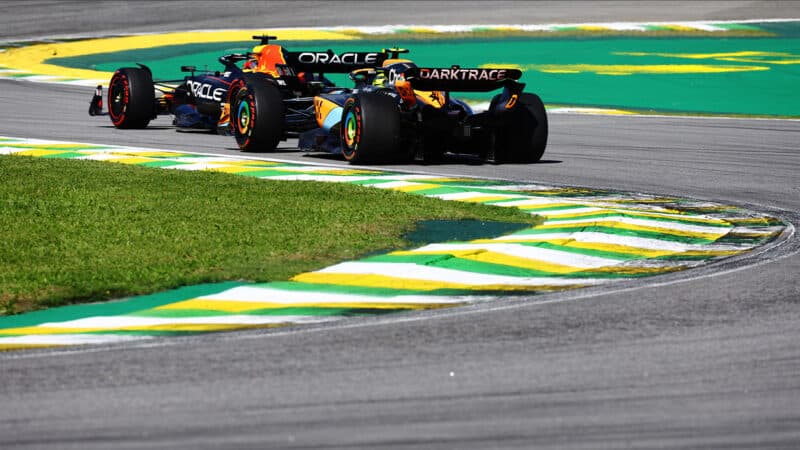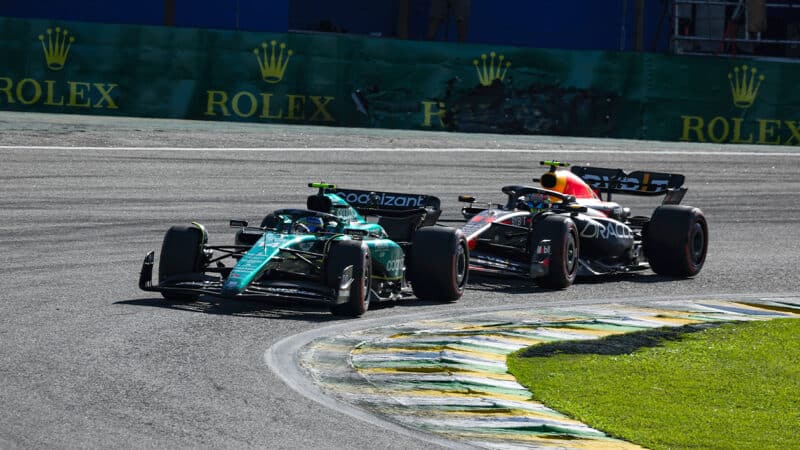Why McLaren couldn't take its genuine chance of Sao Paulo GP win
2023 Sao Paulo Grand Prix analysis: Lando Norris showed that Red Bull no longer has a comfortable F1 advantage, but he couldn't use that pace to challenge for victory in Brazil. Mark Hughes explains why

McLaren had the pace to challenge Red Bull — at the start of each stint
Florent Gooden / DPPI
The competition was real. All weekend Red Bull was feeling the breath of Lando Norris’s McLaren. It had been marginally quicker than Max Verstappen in Q2 of Grand Prix qualifying. It had taken pole from him by a small margin in the sprint shootout of Saturday. It had got almost within DRS range half-way through the sprint, leaving the others far behind, and now – on the restart of the Grand Prix — he was on the front row, having vaulted from sixth to second on the original start (which was red-flagged after a first corner collision between the Haas team and Alex Albon’s Williams).
Verstappen won the start though and thereby the race. Each of the three stints in this two-stop race were essentially repeats of Saturday’s sprint. Ultimately Verstappen had Norris contained – but only just. On the second lap of the restarted race, Norris got a better exit out of the Esses, slipstreamed the Red Bull down the back straight and flicked alongside, but on the outside, into Turn 4. It was close, but not quite a passing opportunity. He’d never get quite so close again. “That’s the first time in my F1 career I’ve actually been in a position to try to pass him,” Norris reflected later. It probably won’t be the last.
“The crucial difference in performance between the two cars was mainly on used tyres,” was the conclusion of McLaren boss Andrea Stella. “On new tyres we can fight them. But as soon as the tyres degrade, Red Bull can have less degradation. The deg was maybe 0.1sec every two laps so when they can limit that, after a few laps they have a tenth of a second per lap on you.”

The Sao Paulo GP is widely regarded as one of the best races of the year
Mark Thompson/Getty via Red Bull

Norris maintains second at the restart
Kym Illman/Getty

Norris tailed Verstappen through Esses but couldn’t get past
Mark Thompson/Getty via RB
It’s the cars, but it’s also the drivers of course. “Everybody manages their pace differently in a race,” said Christian Horner. “Max has become so good at reading a race. He doesn’t panic if he sees Lando taking time out of him in the middle sector or whatever, because he’s looking at the long game and I think he’s just got that inner confidence that he knows where he is. I think 2019 was when he really stepped up that aspect of his game, of maximising the tyres.”
Back on new tyres for the final stint, Norris set a stunning fastest lap in his chase, almost 1sec faster than Verstappen’s best, but with the obvious proviso that Max had no reason to push so hard. He crossed the line for his 52nd career victory 8sec ahead of the increasingly fast McLaren.
There was a big gap to the next-fastest car which this weekend— in a change from recent events — was clearly the Aston Martin. Fernando Alonso prevailed by half-a-tenth of a second over the line from Sergio Perez’s Red Bull. This struggle had been going on for about half the race and it’s difficult to imagine any driver other than the wily, tenacious Alonso who could have pulled this off. Especially given that Perez actually passed him on the penultimate lap. The Aston was an amalgam of the new parts introduced in Austin and the previous spec. Running a smaller rear wing than most – Interlagos lap times are relatively insensitive to wing levels – helped its raceability but it also had a nice, driveable balance for the first time in months. Hopefully the team is back on track. Catching the dicing pair at the end and taking a strong fifth place was Lance Stroll in the other Aston.

Alonso needed every ounce of experience from 375 race starts to fend off Perez
Florent Gooden/DPPI
He’d overtaken the only Ferrari in the race, that of Carlos Sainz, as well as both Mercedes. Charles Leclerc – who’d qualified on the front row – suffered a mechanical failure which stopped the hydraulic pump and cut everything on the formation lap, dumping him into the wall at the fast Turn 7-8 section. Ferrari had arrived here running a little optimistically on bodywork cooling and found in the sprint they had to lift and coast to a debilitating extent. Sainz was able to pass the Mercs to finish sixth only because they were in even worse trouble. Running a conservative ride height after the events of Austin, the reduction in underbody downforce saw Mercedes put on a very big rear wing. That combined with the mechanical set-up to give serious rear tyre degradation, making it slow through the corners and slow on the straights. George Russell’s car was retired with a power unit failure when running behind team-mate Lewis Hamilton who after being passed by Pierre Gasly’s Alpine for seventh lamented, “I’m in his DRS on the straight and he’s still pulling away.” Toto Wolff called it the team’s worst ever performance.

